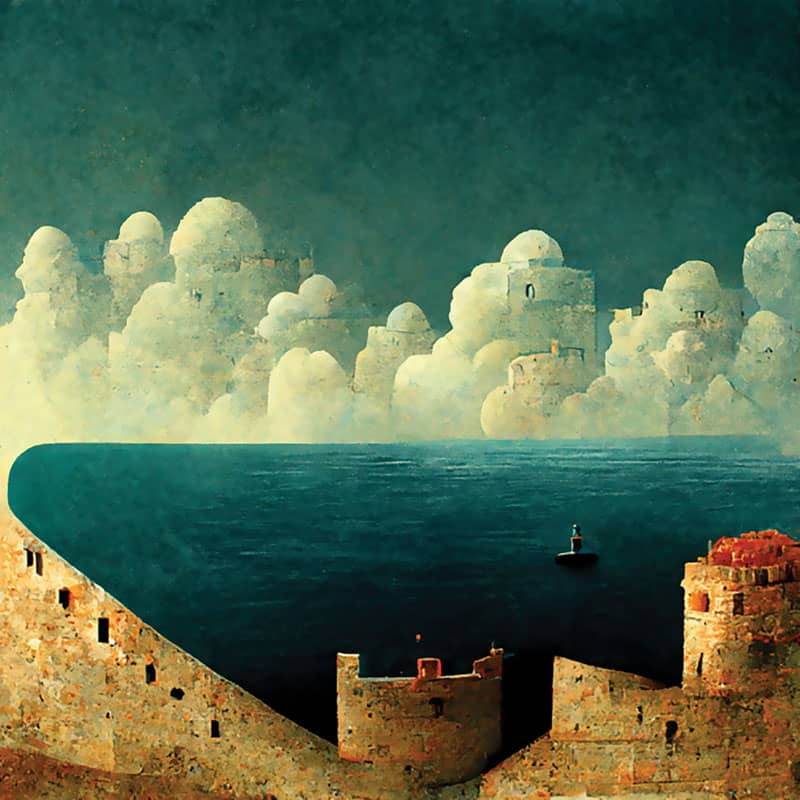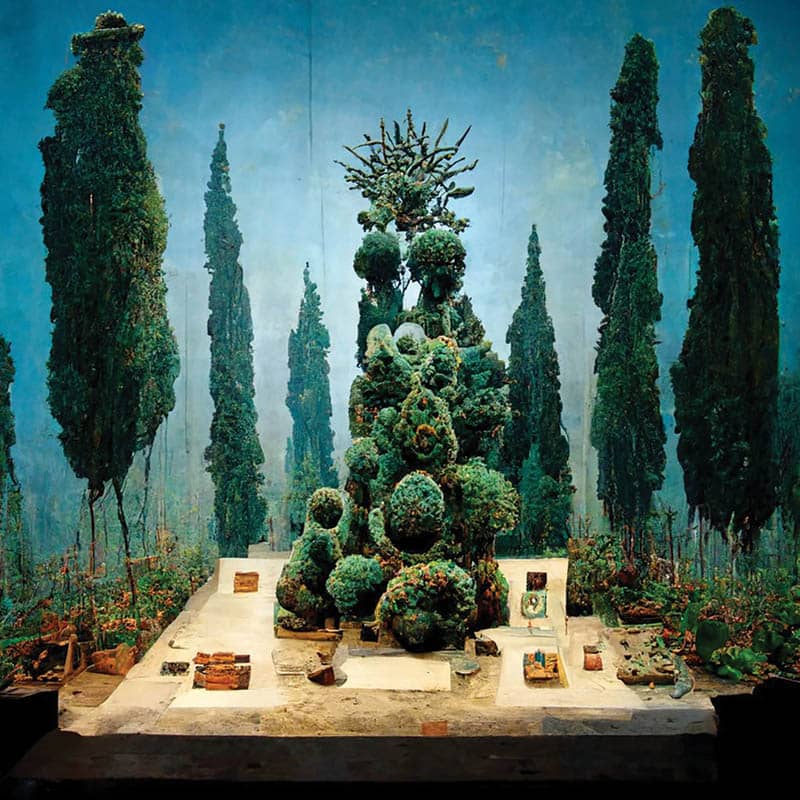Artificial Originality: How an AI Platform Can Revolutionise Creative Processes
If you are wondering why your social media feeds have suddenly become populated with an unusual amount of evocative artistic images, it’s because sophisticated AI-generated contents are now accessible to anyone with a bit of curiosity, an electronic device and an internet connection.
Midjourney is the most straight-forward and gratifying of a recent series of AI platforms which made this possible by generating complex images from a simple text prompt, and which is therefore responsible for large part of those intriguing tweets and Instagram posts. A few well-chosen key words, simply typed into a chat box, can in fact initiate a limitless series of possible visualisations of that association of words, within minutes.

After the initial inputting of the text prompts, the chatbot offers four different images, each available for upscaling, meaning further detailing, and for variations, meaning another set of four images. Each variation can undergo endless other variations and so on, ad infinitum. Iterations are unlimited and represent the core of the platform’s model: while enticing the user to keep experimenting, they contribute to training the AI and therefore lead to a continuous, rapid improvement of the general quality of outcomes – and perhaps to an increased standardization of creative disciplines.
This flow of dazzling original images is also one the most intriguing and challenging AI-training exercises ever done.
Behind the simplicity of the front-end platform, there are thousands of trillions of operations per image, and a super-computing-power which has never been so accessible to almost anyone. The revolutionary aspect of Midjourney lies in its unprecedented accessibility. Even though we have been familiar with notions of deep learning, coding and algorithm design for a while, most of us were not able to directly make use of them, let alone incorporate them in the initial stages of a creative process.

The rapidity of this paradigm shift is as astonishing as its results: in less than four years, what was considered ‘AI-generated art’ has gone from sensational research project for Ivy League universities, to millions of people’s new favourite hobby.
According to David Holz, founder of Midjourney, creative industries professionals represent only 30% of the platform’s users, while the remaining 70% is there for the fun of effortlessly turning any idea into a startling, beautiful image. That 30% of professional users represents architects, graphic designers and artists who seem to be both attracted and terrified by it in equal measure. On the one hand, Midjourney offers the possibility to facilitate and improve iterations, crucial to any creative process, and to therefore encourage imagination.

On the other hand, it indirectly questions the notion that in any creative discipline, the idea behind a piece, or the concept of a project proposal, counts as much as its final outcomes – if not more.
In a recent interview on architecture magazine Domus, Niccolò Casas (architect and researcher at Bartlett University College of London, and author of Plasticity) rightly points out that “the role of the architect and designer, after all, is to show something that was not there before. Clearly, artificial intelligence works on this very part: on intuition and visualisation. This does not mean that there will be no more work for us in the future, but that it will certainly change dramatically”. How will it change, is not clear yet.

What will we be able to do with Midjourney other than creating beautiful 2D concept images? Will the platform be able to switch to 3D content, and therefore be able to plug into more sophisticated software like Rhino? Also, how will copyright issues of what is produced by the AI be regulated?
These are just some of the several key questions which will define the nature of the drastic change which Casas describes, and which might revolutionise, and even generate, entire creative industries.
ERICA GIUSTA is Director of Innovation at architecture firm AP Valletta. She read for an MA in Architecture, and has a Post-Graduate Master from the Sole24Ore Business School in Milan. She contributes regularly to academic journals and international architecture magazines such as A10 New European Architecture and Il Giornale dell’Architettura.










